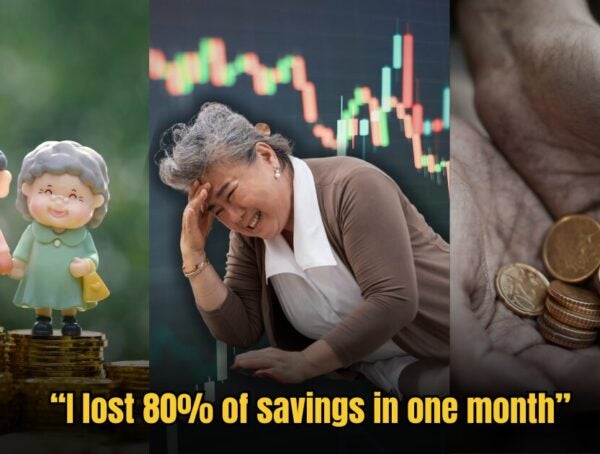
In this thinkpiece, our IRL writer digs deep into the numbers to find an answer to the question posed by inquiring minds when visiting a bazaar Ramadan.
Every Ramadan, we ask the same questions:
“Eh, that abang selling ayam golek at the corner… how much do you think he’s making ah?”
“RM7 for cendol?! Bazaar food so mahal now, confirm untung besar gila right?”
“Should we try selling something next year? Just one month only leh.”
We all know someone who’s toyed with the idea. But for most of us, we’re just curious.
So we at IRL did the homework for you.
The Numbers Don’t Lie (But They Also Don’t Tell the Whole Story)
According to the Department of Statistics Malaysia (DOSM), vendors at Ramadan bazaars in KL made an average of RM69,491 in sales last year.
In places like Petaling and Kuala Langat, it’s a bit lower — around RM51k to RM59k.
That’s for one month. Impressive, right?
But not all of that is profit. Once you deduct costs — ingredients, rental, maybe a part-time worker or two — the average profit margin for street food vendors is around 60-70%. That means…
- KL vendors might bring home RM41k–RM48k
- Petaling folks might see RM30k–RM41k
- Smaller towns? Still solid, but definitely less.
Still, if you do it right, one month of puasa could match — or beat — a full year’s worth of side hustle.
Where You Sell Matters (A Lot)
If you’re picturing a chill little stall in your taman with steady income, think again. The real money often depends on location.
Some gerai spots in high-traffic areas like Jalan TAR in KL can go for RM10,000 to RM20,000 in rental fees — and that’s not from the council.
That’s from middlemen, aka the infamous “Ali Baba” scalpers, who book in bulk and resell for a fat profit.
The official price? Sometimes as low as RM300… if you manage to get one.
It’s not just about foot traffic — it’s about who you know, how early you apply, and sometimes, how many palms need greasing.
The hustle starts before you even fire up the stove.
The Viral RM7,000-a-Day Drink Seller
Let’s talk about the legend — Suriane Abdullah, a vendor in Kuala Besut, Terengganu who recently made headlines for selling 113 varieties of drinks and pulling in RM7,000 a day.
Yes, you read that right.
From boba to laici kang, cendol to float drinks, she sells around 3,000 cups daily. Her secret? Go big or go thirsty. (And a prime spot, of course.)
But it’s not all profit — she uses 200kg of sugar per day, boils everything for hygiene, and donates leftovers to mosques. High volume, high ethics, but also most probably high stress.
Suriane’s story is impressive, but let’s be clear — she’s the exception, not the norm.
Not Everyone Is Killing It
While some vendors are driving home with a boot full of cash, others are… barely breaking even.
Some reports from Johor Bahru and Shah Alam mention daily losses of RM300, especially from food that doesn’t sell. Add to that ingredient price hikes, rain, footfall drops in the last week before Raya — and it can feel like a gamble.
One vendor even switched from nasi lemak (losses) to kuih (less wastage). Another cut down on ingredients just to keep prices stable.
Why Bazaar Food Feels Expensive (But Sometimes Isn’t)
If you’ve ever gasped at a RM12 roti john or RM4 teh ais limau, you’re not alone.
But once you factor in:
- Scalped gerai prices (RM5k–RM15k in extreme cases)
- Short operating hours (3pm to 7pm daily)
- Labour costs, even for just one helper
- Unsold leftovers (a quiet Tuesday = dead stock)
…it makes a little more sense. Doesn’t mean it’s affordable — just means it’s more complicated than “untung kaw kaw”.
So… Is It Worth It?
That depends on who you ask.
Some people treat it like a one-month side hustle. Teachers, retirees, even full-time office workers take leave to test the waters. For them, it’s not just about money — it’s community, tradition, and just trying something new.
Others go all in. They rent the best spot, hire a team, and treat it like an F&B sprint. High risk, high reward — but also high blood pressure.
And some just walk away by week 2, drained and in the red.
Final Takeaway
So how much can you actually make?
- Anywhere from a few hundred ringgit to five figures — depending on what you sell, where you sell, and how good you are at adapting.
- But don’t let viral headlines fool you — most vendors are working long hours, battling rising costs, and praying for good weather.
- And no, not everyone’s buying their Myvi in cash after one month of selling roti john.
Still, it’s a fascinating slice of Malaysian life — a chaotic, colourful, calorie-filled economy that comes alive once a year.
So next time you queue for murtabak, spare a thought for the person behind the griddle.
They might be hustling for that Raya bonus — or just breaking even.
Either way, they’re part of what makes the bazaar Ramadan… bazar Ramadan.
Have a story to share?
Submit your story to ym.efillaerni@olleh and you may be featured on In Real Life Malaysia.
Read also: How Much I Save When I Shop At The Wet Market At 3am – In Real Life
More from Real Personal Finance
“I Drive Grab Instead of Choosing Retirement” Shares 65 yo M’sian Man
This is a story of a 65-year-old Grab driver who lost his job after COVID and instead of retiring chose …
How I Saved RM50,000 On a 2nd-hand Myvi Compared to a New Proton Saga
Based on this Kuala Lumpur man’s firsthand experience, here’s how it's possible to save RM50,000 on a car by buying …
How I Lost My Retirement Savings Worth RM300,000 After Investing In Triumph FX’s Crypto Token
This story was shared by a senior citizen who lost her retirement savings to an investment platform after it converted …
















